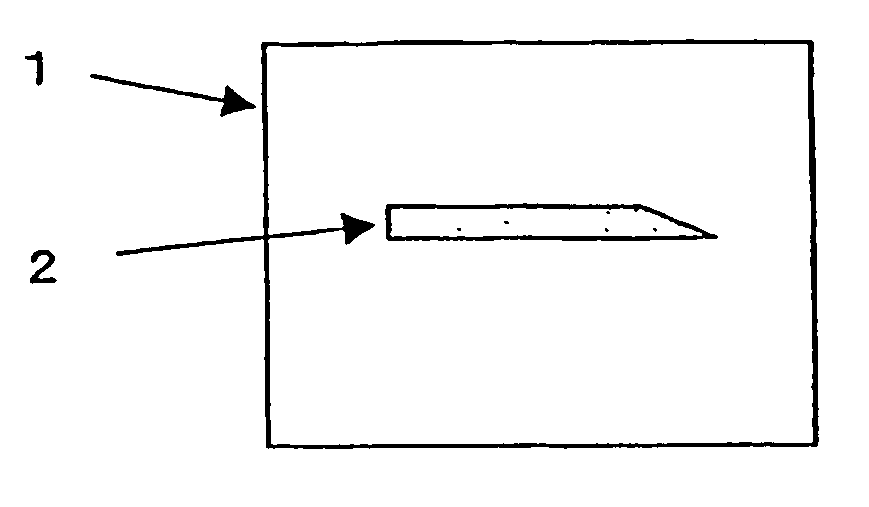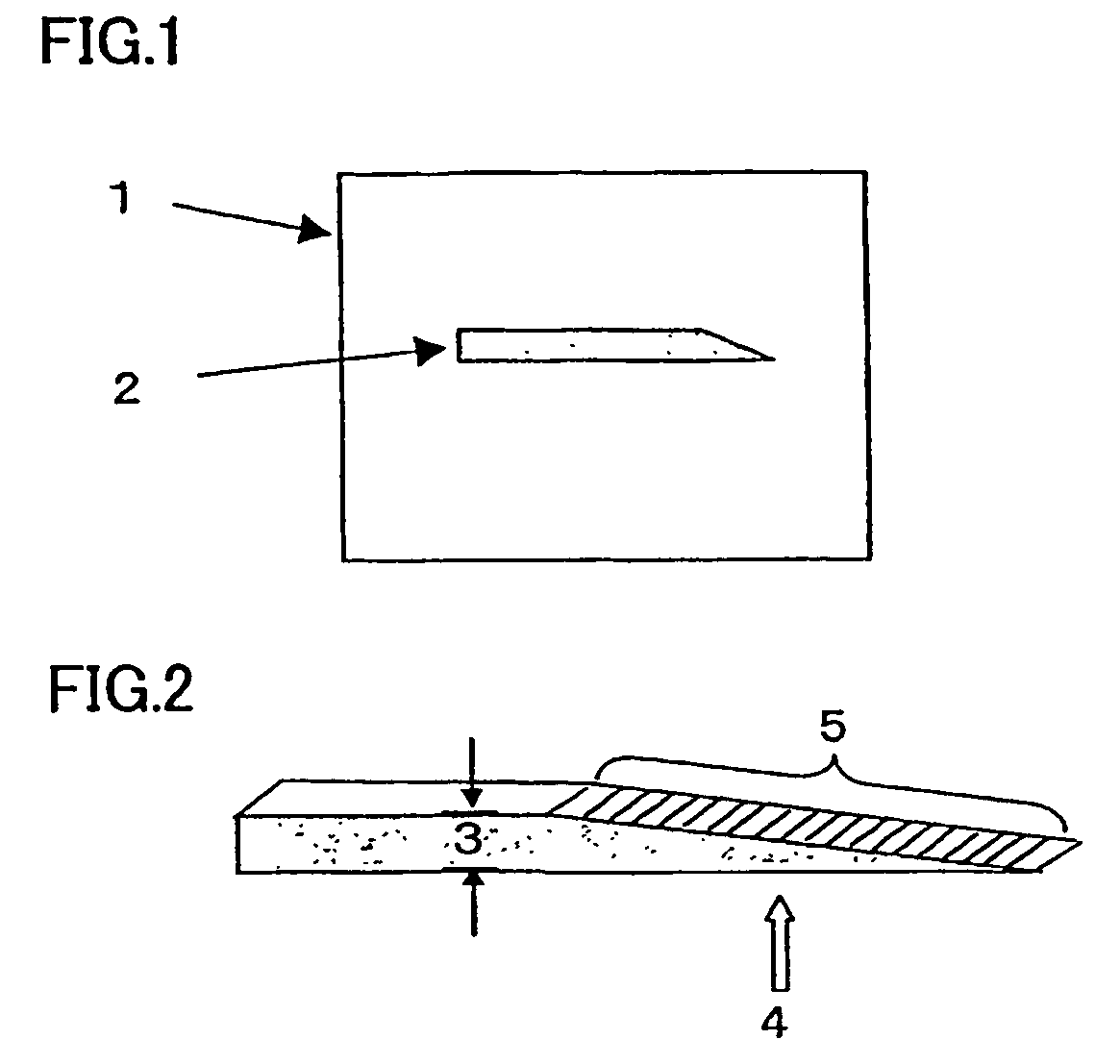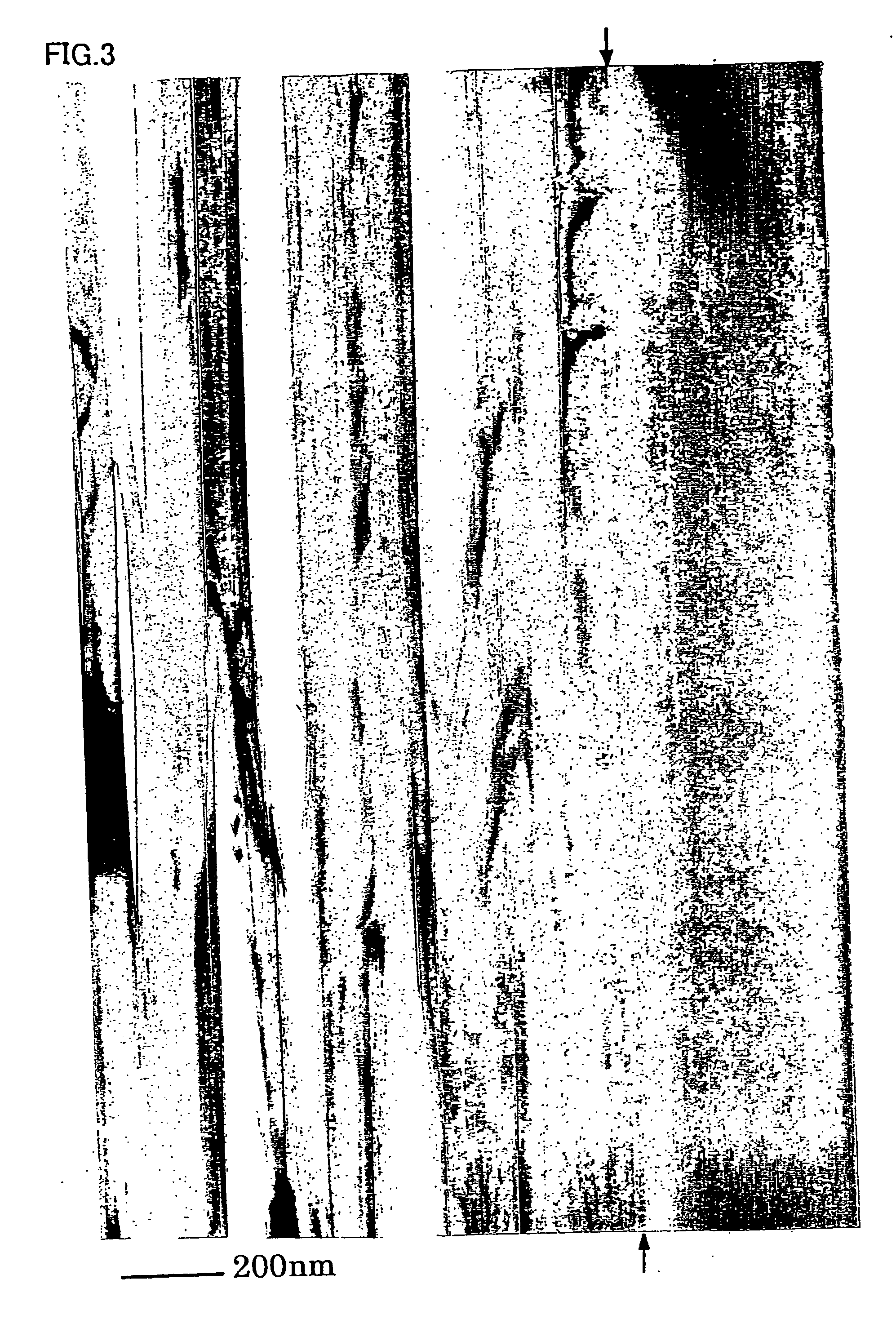Filmy graphite and process for producing the same
- Summary
- Abstract
- Description
- Claims
- Application Information
AI Technical Summary
Benefits of technology
Problems solved by technology
Method used
Image
Examples
example 1
[0070] Pyromellitic dianhydride (4 equivalents) was dissolved in a solution prepared by dissolving 3 equivalents of 4,4′-oxydianiline and 1 equivalent of p-phenylenediamine in dimethylformamide (DMF) to produce a solution containing 18.5% by weight of polyamic acid.
[0071] While cooling the resulting solution, an imidization catalyst containing 1 equivalent of acetic anhydride and 1 equivalent of isoquinoline, relative to the carboxylic acid group contained in the polyamic acid, and DMF was added thereto, followed by defoaming. Subsequently, the resulting mixed solution was applied onto an aluminum foil such that a predetermined thickness was achieved after drying. The mixed solution layer on the aluminum foil was dried using a hot-air oven and a far-infrared heater.
[0072] The drying conditions for achieving a final thickness of 75 μm were as follows. The mixed solution layer on the aluminum foil was dried in a hot-air oven at 120° C. for 240 seconds to produce a self-supporting ge...
example 2
[0084] Pyromellitic dianhydride (3 equivalents) was dissolved in a solution prepared by dissolving 2 equivalents of 4,4′-oxydianiline and 1 equivalent of p-phenylenediamine in dimethylformamide (DMF) to produce a solution containing 15% by weight of polyamic acid.
[0085] While cooling the resulting solution, an imidization catalyst containing 1 equivalent of acetic anhydride and 1 equivalent of isoquinoline, relative to the carboxylic acid group contained in the polyamic acid, and DMF was added thereto, followed by defoaming. Subsequently, the resulting mixed solution was applied onto an aluminum foil such that a predetermined thickness was achieved after drying. The mixed solution layer on the aluminum foil was dried using a hot-air oven and a far-infrared heater.
[0086] The drying conditions for achieving a final thickness of 75 μm were as follows. The mixed solution layer on the aluminum foil was dried in a hot-air oven at 120° C. for 240 seconds to produce a self-supporting gel ...
example 3
[0090] Pyromellitic dianhydride (1 equivalent) and p-phenylenebis(trimellitic acid monoester anhydride) were dissolved in a solution prepared by dissolving 1 equivalent of 4,4′-oxydianiline and 1 equivalent of p-phenylenediamine in DMF to produce a solution containing 15% by weight of polyamic acid.
[0091] While cooling the resulting solution, an imidization catalyst containing 1 equivalent of acetic anhydride and 1 equivalent of isoquinoline, relative to the carboxylic acid group contained in the polyamic acid, and DMF was added thereto, followed by defoaming. Subsequently, the resulting mixed solution was applied onto an aluminum foil such that a predetermined thickness was achieved after drying. The mixed solution layer on the aluminum foil was dried using a hot-air oven and a far-infrared heater.
[0092] The drying conditions for achieving a final thickness of 75 μm were as follows. The mixed solution layer on the aluminum foil was dried in a hot-air oven at 120° C. for 240 secon...
PUM
| Property | Measurement | Unit |
|---|---|---|
| Temperature | aaaaa | aaaaa |
| Temperature | aaaaa | aaaaa |
| Temperature | aaaaa | aaaaa |
Abstract
Description
Claims
Application Information
 Login to View More
Login to View More - R&D
- Intellectual Property
- Life Sciences
- Materials
- Tech Scout
- Unparalleled Data Quality
- Higher Quality Content
- 60% Fewer Hallucinations
Browse by: Latest US Patents, China's latest patents, Technical Efficacy Thesaurus, Application Domain, Technology Topic, Popular Technical Reports.
© 2025 PatSnap. All rights reserved.Legal|Privacy policy|Modern Slavery Act Transparency Statement|Sitemap|About US| Contact US: help@patsnap.com



